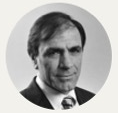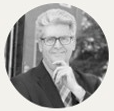Towards #WHEC2022. Webinar 4: Quality and relevance of the programs
One of the main axes of UNESCO World Higher Education Conference #WHEC2022, to be held in Barcelona (Spain) in May 2022, is quality and relevance of the programs. In order to transfer the approaches of Latin America and the Caribbean, UNESCO IESALC is carrying out a specific Regional Consultation, through a variety of events in order to bring together as many voices from different sectors as possible.
On this occasion, experts in the area participated in this online seminar – organized jointly with the IDB, OEI, Santander Universities and SEGIB – to reflect on the quality and relevance of higher education programs.
Moderator: Victoria Galán-Muros, Head of Research and Analysis UNESCO IESALC
Some ideas from the speakers

Francesc Pedró, Director UNESCO IESALC
Quality and relevance constitute one of the most important areas that mark our future agenda. I don’t like to think that quality is a political concept or a set of strategies that have nothing to do with equity.
Quality and equity are two sides of the same coin. In Latin America we have experienced the tension between equity and quality; policies have tended to expand access to higher education, sometimes neglecting the essential emphasis on quality.
For UNESCO, equity makes no sense if we are not certain that the quality of provision meets the minimum standards that our society considers it should have. All but two countries in the region have quality assurance agencies.

María José Lemaitre, president of the Inter-University Center for Development (CINDA), Chile
“The trouble with our times is that the future is not what it used to be”. Paul Valery
Definitions of quality are eminently subjective, depending on the perception of each individual. There are different conceptual definitions. An operational definition was proposed at the Regional Conference on Higher Education in Latin America and the Caribbean (CRES, Córdoba, 2018) that specifies the activities or operations that must be carried out to measure a variable and interpret the data obtained.
Quality is based on institutional purposes, commitment to students and knowledge. We know that students are a heterogeneous population and that the work environment and the required competencies change radically.
We have inadequate curricula: extensive, rigid, inbred; but technology offers new opportunities in all its potential. A horizontally and vertically integrated curriculum design is needed, paying attention to innovation and best practices.
How do we move forward? With quality, equity and relevance. Commitment to: students, knowledge, lessons learned, institutional identity and attention to the needs of the environment.
When making changes there is at times a dysfunctionality, a temporary incompetence, it is necessary to go through a learning process to see innovation and improvements.
It is necessary to focus on quality, with a clear institutional identity, attending to the needs and demands of the environment, resources and processes to achieve the expected results, paying attention to innovation and best practices.

María Marta Ferreyra, senior economist in the Office of the Chief Economist for Latin America and the Caribbean at the World Bank
Institutional adjustments should focus on two priorities: 1. The environment, who the students are, their differences; and 2. A look at the private sector, the employers, what they need, what kind of skills, what profiles are they looking for, and in what areas. This information should be used to decide which programs, with what content, what length. Adjust the offer to the needs of students and employers.
Measuring the results of the efforts implies a lot of work and the institutions will not do it if they do not have the necessary incentives, which is why changes in educational policies are required in order to achieve changes in the system.
If we really want to reach marginalized students, we need to have more flexible policy models. Quality and equity are inseparable. One obstacle is the rigidity of regulatory and financial systems. The proposal is to pilot and measure the results. The question is, what are we going to do to make flexibility work?

Arturo Cherbowski Lask, executive director of Santander Universities and general director of Universia Mexico
We have to do a deep reflection within HEIs to see how students have changed; and we also have to do it in the private sector, because the skills that are needed are also changing. The dialogue between the HEIs and the private sector has been a dialogue of the deaf. In the private sector we have to make the same self-criticisms because processes are also changing.
Strategies to follow would be flexibility in HE in order to have the necessary skills for productive work. The same in companies, where it is necessary to change hiring policies, the entry to the labor markets. we must reflect on what the so-called areas of talent imply.
We must focus on learning to learn, students have to learn constantly and must be reflective, work in teams, resilient; and we must return to a comprehensive training: with a sense of ethics, transparency and social responsibility.

Néstor Pan, President-elect of the Ibero-American System for Quality Assurance in Higher Education (SIACES) and President of the National Commission for University Evaluation and Accreditation, Argentina
We do not have data in Latin America to track graduates. If the states do not have these data on relevance and quality, it is difficult to sustain changes.
The levels of coverage are very wide, we want to link the university with the world and with work, but there is a world without work.
We confuse terminologies and let in students who do not have sufficient competencies for certain careers.
The competence of the standards is different in each country and it depends on different organisms.
For quality agencies, coverage levels are important to reach the academic peripheries and have the minimum quality; objective data that are the results of accreditations and evaluations.
In Argentina, graduation rates have decreased by 35% and the dropout rate during the first year of university ranges between 35% and 55%.
The general debate is about who we work for: for students who are not getting jobs. The idea is to produce credits to provide specific and transversal skills so that if a student drops out, he/she would be able to find a job that would give him/her a guaranteed salary.

Marcelo Bentancour, Undersecretary for Training of the Federation of University Teachers and head of the FEDUN publishing house
Teachers must contribute to the generation of strategies because teachers are the fundamental engine of all changes. This can be seen, for example, with the need for remote education imposed by the pandemic.
Changes force us to change strategies. The commitment to teachers cannot be seen as something for the future. If institutions and states do not focus on teachers as the engine of innovation, they will have big problems, because then quality becomes an abstract discussion.
The teacher is required to make an effort to implement quality strategies, but the existing conditions and environments are not conducive to the development of a reflective attitude.

Fernando Reimers, director of the Global Education Innovation Initiative and the International Education Policy Program at Harvard University and member of the UNESCO Commission on the Futures of Education
There is great diversity in the world’s 28,000 universities. It is important to recognize the value of diversity, it makes no sense to aspire to a single university model, it is neither socially nor financially possible
We need a way of thinking that recognizes the different purposes. The population of Latin America has a lot of confidence in the university. This speaks of the social role and of the recognition and hope that the population has in the universities. It is necessary to develop more links with the society.
It is also useful to have information about what percentage of graduates are employed and with what income levels. Social linkage should be analyzed to see what the economic impact on society is, to measure the social responsibility and impact.
One of the things needed is to make the link between the university and society more visible, in individual, economic and social terms. It is necessary to develop the capacity to do things better, to professionalize management. Systematize excellence and put this knowledge into circulation, so that good things are recognized and this serves as a stimulus. We should interest ourselves in seeing what the results are like.
There is a risk for institutions to become politicized and for universities to become small republics. We need to professionalize university management. Build systems that integrate several universities, from the teaching and research point of view.
It is necessary to understand the enormous challenges of the Sustainable Development Goals (SDGs). The most transformative learnings are those that are authentic and meaningful. One of the pedagogies is to work the SDGs in projects. To teach from each space of action what should matter to the students, based on their capacities, to make them participate in the change.
We must build hope on the basis of helping people develop their abilities to make a difference. Those of us who have the trust of students and society to build a better world, must thank this profession for its serious commitment to the historic significance of the moment.
Presentation
Calidad y pertinencia de los programas de educación Superior (Quality and relevance of higher education programs), María José Lemaitre
Learn more: Latin America and the Caribbean Consultation addressed main themes of the #WHEC2022

RELATED ITEMS








